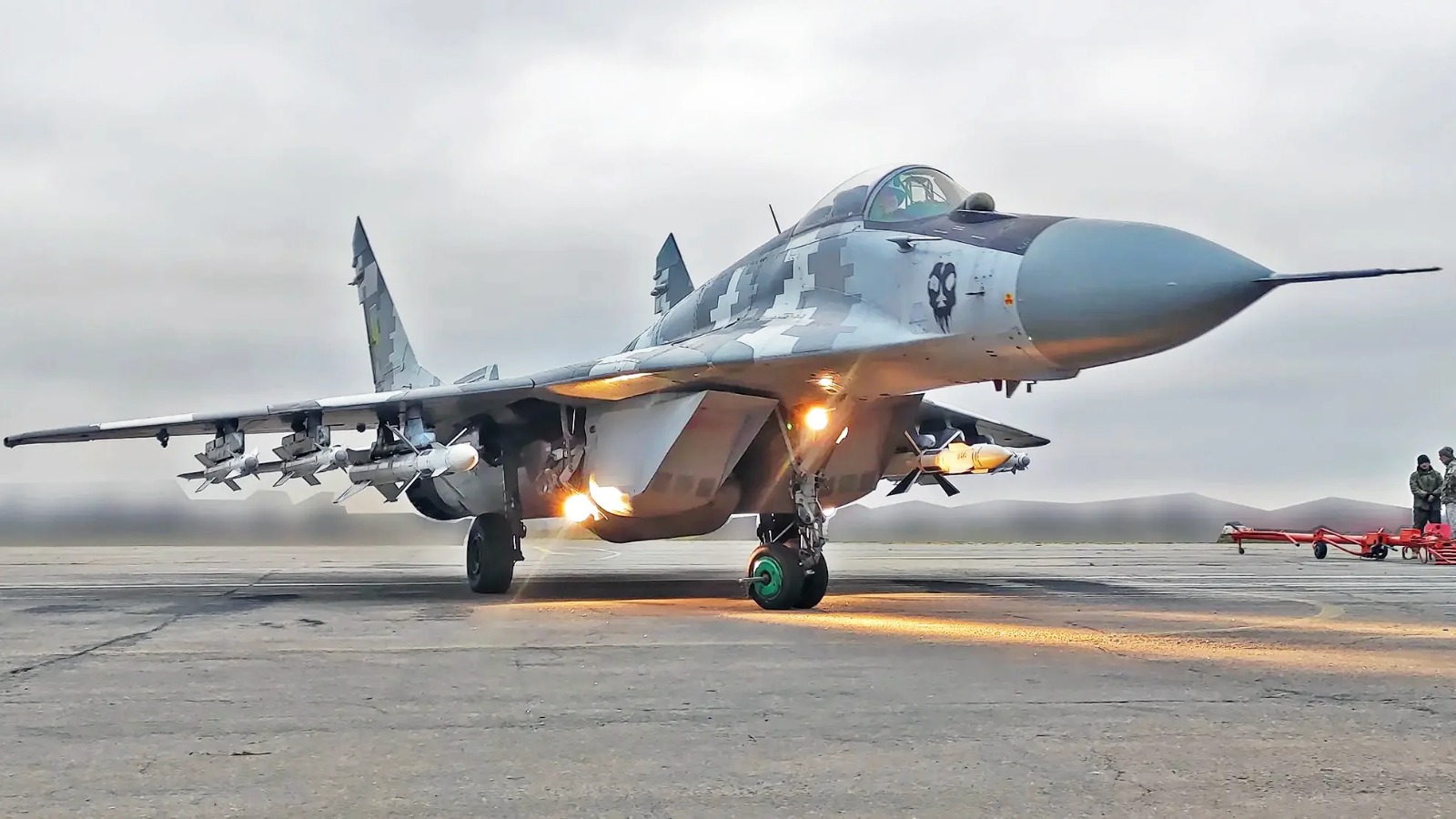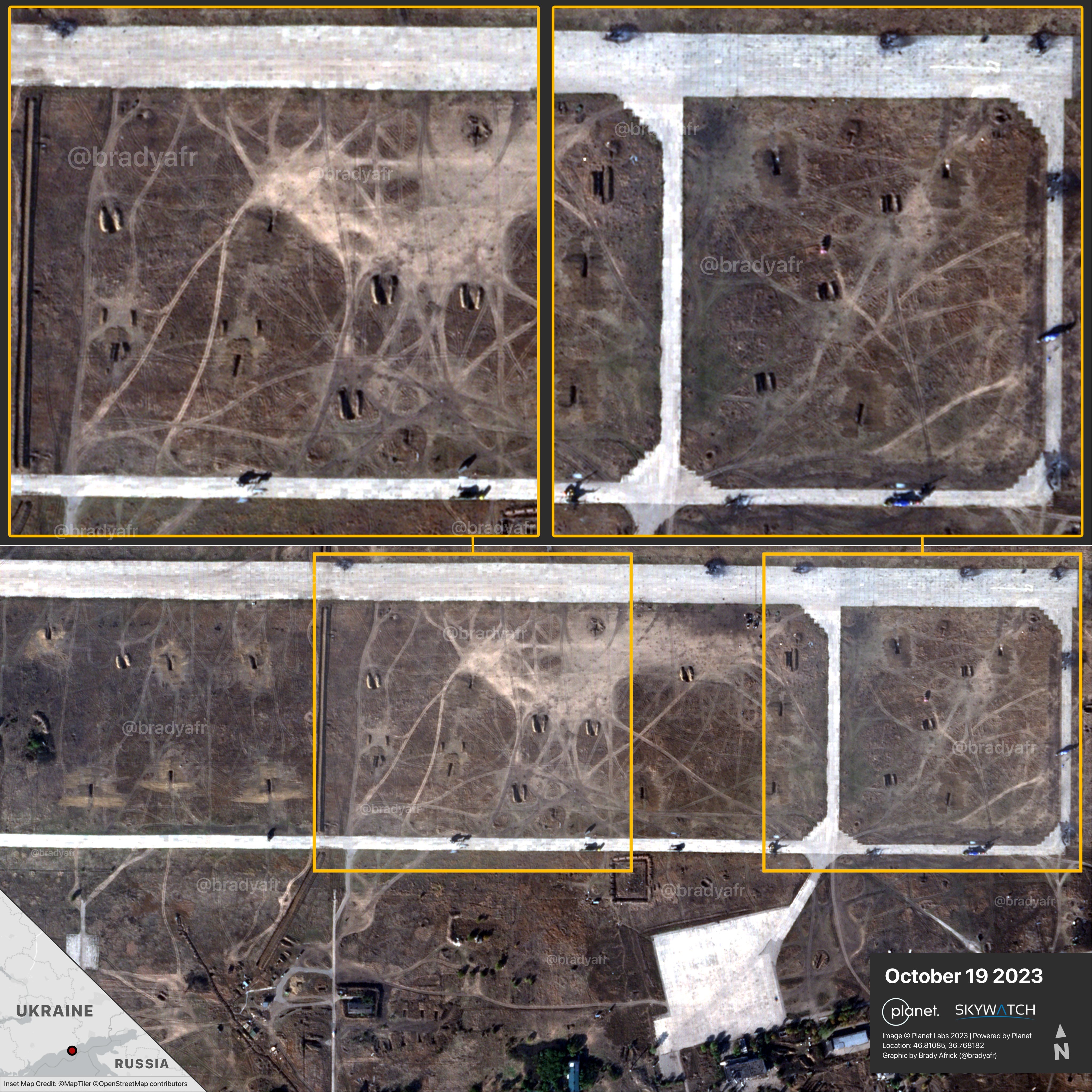Russia’s Ministry of Defense (RuMoD) has announced that its air defense systems managed to shoot down seven Ukrainian MiG-29 Fulcrums in a day when the Russian military is still recovering from the unexpected ATACMS attack on its airfields.
The RuMoD noted in its press release that “Only during the last 24 hours, seven Ukrainian MiG-29 aircraft were shot down by air defense means,” Russian state news agency RIA Novosti reported. According to Russian claims, air defenses of the Russian military have shot down about 12 military aircraft belonging to the Ukrainian Air Force.
The Russian MoD did not detail the circumstances under which the Ukrainian MiG-29s were shot down. Military experts noted that it could likely be an aerial ambush that caught the fighter pilots unaware. Some military watchers expressed skepticism about the claims, speculating that it could much rather be a reporting mistake by the news agency.
Indian Air Force veteran and an ardent follower of Russian military affairs, Squadron Leader Vijainder K. Thakur, told EurAsian Times, “Since they were lost to air defense, it is logical to assume that they ran into ambushes. In essence, the AFU may have encountered Russian air defense where they did not expect to encounter.”
When asked to elaborate, Thakur explained that the “Ukrainian MiG-29 flies low to evade detection by Russian radars. As they near the launch point for the JDAM they are carrying, they pull up to gain altitude and then launch their glide bombs to get maximum range.
“When they pull up, they are prone to detection by adversary radar. As such, the pull-up point is calculated to keep the launch platform out of range of adversary air defense systems. However, if the adversary has surreptitiously moved its air defense systems closer to the launch point, the launch platform can get shot down.”
The claims about seven MiG-29 jets going down on October 20 have not been confirmed by the Ukrainian Air Force yet. However, if authenticated, it could be a massive setback to the Ukrainian Air Force awaiting advanced F-16s from NATO. The Soviet-origin MiG-29 fighters are the mainstay of the archaic Ukrainian Air Force, along with the Su-24, Su-25, and Su-27s.
Although the exact number of MiG-29s in Kyiv’s arsenal is unknown, there were reports that it had just about 50 in flyable condition when Russia launched the invasion, and more than 50 were later pulled out of storage to fight the Russian Air Force. EurAsian Times cannot confirm these numbers.

It is widely known that the frontline MiG-29s of the Ukrainian Air Force have borne the brunt of the aerial war with a much superior air force of Russia. According to open-source intelligence (OSINT), arms and military analysis website Oryx, which documents visual losses, the Ukrainian Air Force has lost 22 MiG-29 fighters in the war.
The MiG-29 force, in particular, is not ideal as it consists of retired, long-abandoned airframes that the Ukrainians have retrieved from long-term storage, a few locally refurbished airframes, and the Slovakian and Polish aircraft, which have also received varied improvements.
Earlier, Maj. Vadym Voroshylov, a Ukrainian MiG-29 pilot, told The Telegraph, “Right now, we can only hold the enemy, but with F-16s, we could control the air as well as the seas and the ground to protect infantry.”
The focus has invariably shifted to the F-16s, but until they arrive several months later, the MiG-29s are holding fort and dropping munitions on Russian positions.
While Russian claims are swirling on social media, there is news about the loss incurred by the Russian helicopter fleet in the latest ATACMS attack by Ukraine that has become a more significant object of discussion among military analysts and netizens watching developments unfold.
Russia Lost More Than A Dozen Alligators?
According to an intelligence update published by the UK Ministry of Defense (MoD) on October 19, Russia most likely lost 14 helicopters in strikes on two Russian airfields this week that Ukraine allegedly targeted with long-range ballistic missiles fired from Army Tactical Missile Systems (ATACMS) provided by the United States.
“Although the extent of damage is currently unconfirmed, it is likely nine Russian military helicopters at Berdyansk and five at Luhansk were destroyed, with Ukraine claiming to have used the US-provided long-range army tactical missiles (ATACMS) for the first time,” it noted in the assessment.
It further noted that in the face of the Ukrainian advance, Russian defense lines increasingly depend on rotary wing support because Russian fixed-wing close air support has been dreadfully inadequate thus far.
According to the intelligence update, as the main forward operating base on the southern axis, Berdyansk served as a logistical hub with offensive and defensive capabilities. If verified, there’s a good chance that these losses will affect Russia’s capacity to launch more offensive operations along this line and defend itself.
In its conclusion, the update noted, “There is a realistic possibility this strike will compel Russia to once again relocate its operating bases and command and control nodes farther from the front lines, increasing the burden on logistics chains.”
Ukrainian President Volodymyr Zelensky announced on October 17 that Kyiv had attacked Russian airfields in the Luhansk region of the country and the port city of Berdyansk in the Zaporizhzhia region using the ATACMS.

The missile variants sent to Ukraine boast a range of approximately 100 miles, proving valuable to Ukraine’s Forces during a critical phase of their counteroffensive in the eastern and southern regions.
The US-based Institute for the Study of War (ISW) announced on October 18 that it appears that the Ukrainian ATACMS likely seriously damaged Russian aircraft and airfield equipment hit on the Berdyansk airfield on October 17. This information was based on satellite images from October 17. ISW hasn’t been able to confirm the precise amount of this damage, though.
At least seven places with apparent traces of fire and damage, where previous satellite photography had revealed Russian helicopters, have been highlighted by several open-source intelligence analysts in their satellite imagery of the Berdyansk airfield. They have also noticed a large number of helicopters that have been moved.
The Ukrainian military said Russian forces had Mi-28, Mi-24, and Ka-52 helicopters positioned at the airfield before the attack, indicating that there may have been additional damage.
- Contact the author at sakshi.tiwari9555 (at) gmail.com
- Follow EurAsian Times on Google News





